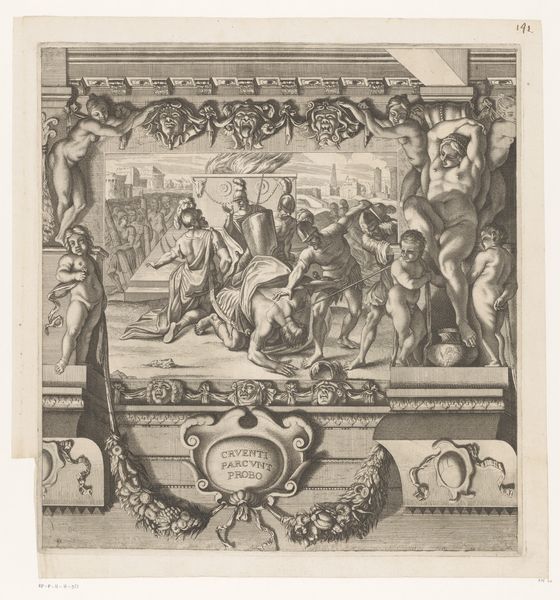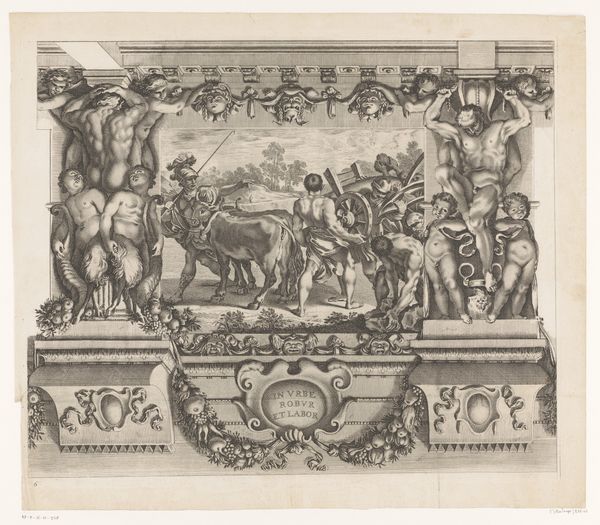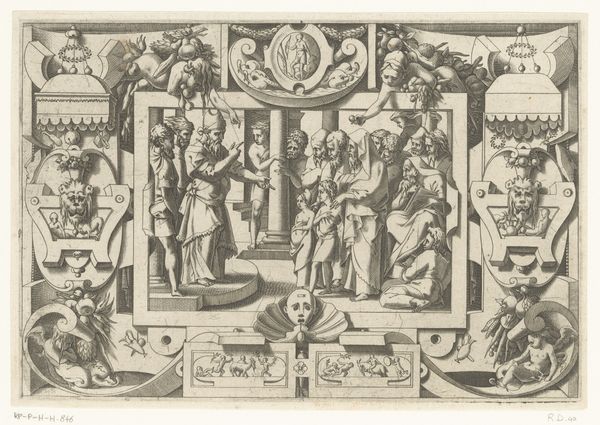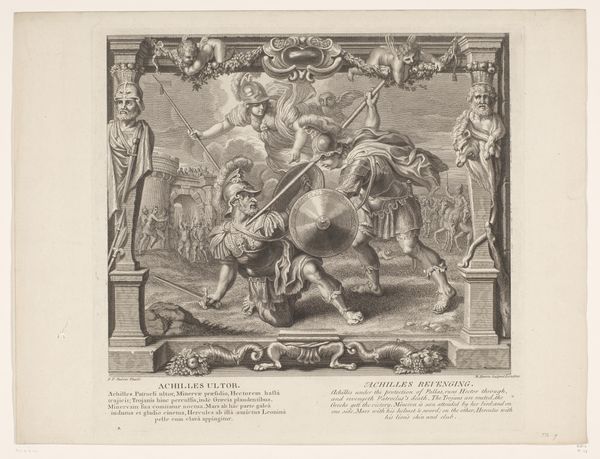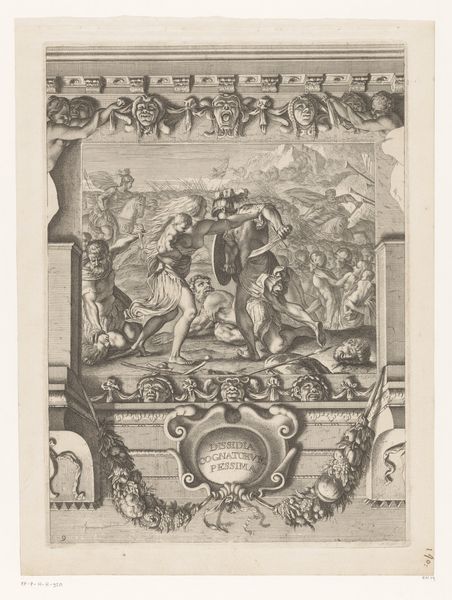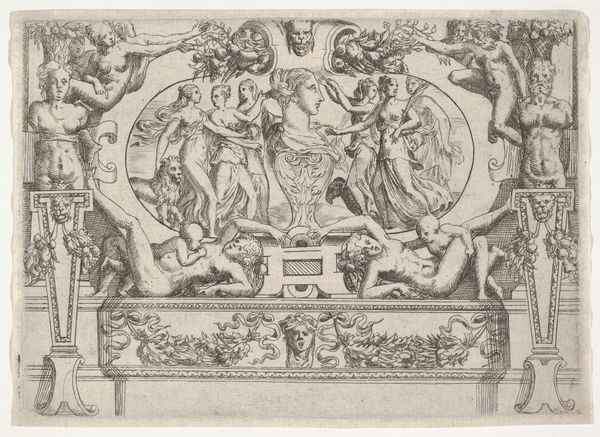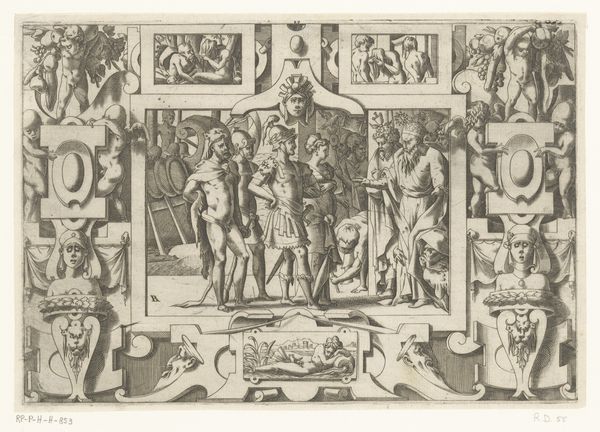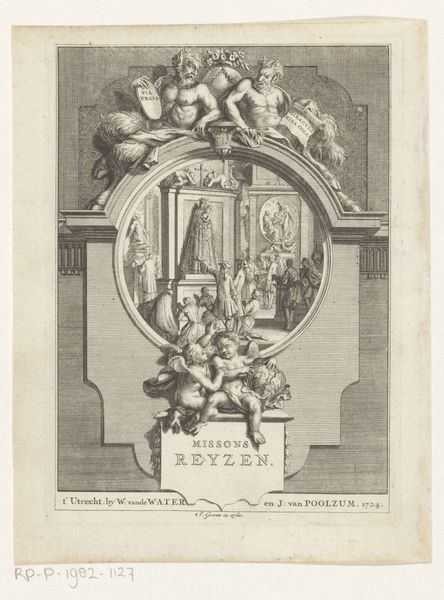
Romulus wijdt de buit van de verslagen koning Acron aan Jupiter 1659
0:00
0:00
louisdechatillon
Rijksmuseum
print, metal, engraving
#
narrative-art
#
baroque
#
ink paper printed
# print
#
metal
#
old engraving style
#
figuration
#
pen-ink sketch
#
pen work
#
history-painting
#
engraving
Dimensions: height 455 mm, width 446 mm
Copyright: Rijks Museum: Open Domain
Curator: Let's discuss "Romulus wijdt de buit van de verslagen koning Acron aan Jupiter," an engraving by Louis de Châtillon, from 1659. Editor: This print immediately strikes me with its ornate frame surrounding the central scene. I notice a theatrical quality, almost as if we are peering into a play. What can you tell me about the context in which this print was made and its potential role? Curator: Well, consider the Baroque period's fascination with grand narratives and the dissemination of these narratives through prints. Châtillon, here, engages with the construction of national identity, specifically Roman identity, by depicting Romulus, a foundational figure. How do you think prints like these functioned within the cultural and political landscape of the 17th century? Editor: I suppose prints like these, accessible to a wider audience, played a role in shaping historical narratives and ideals of leadership or patriotism... So, the engraving, more than just depicting a historical event, reinforces social values? Curator: Precisely. It's also worthwhile noticing where it would be placed. Prints were collected and were kept into albums. The Rijksmuseum also indicates the artist who sold the prints, "se vend chez ledit Tortebat, libraire rue St Catherine proche la porte Saint Victor à la cloche," to facilitate purchases. Consider how the art market operates as a space for exchanging social meanings. Editor: Thinking about it that way, the image itself takes on another dimension; it's a commodity participating in cultural discourse. I now perceive that, beyond just historical depiction or aesthetics, the work is steeped in the sociopolitical contexts of its creation and distribution. Thank you for the enlightenment. Curator: Indeed. Seeing art as deeply embedded in its time reveals much about a society’s values and the public role of art itself.
Comments
No comments
Be the first to comment and join the conversation on the ultimate creative platform.

